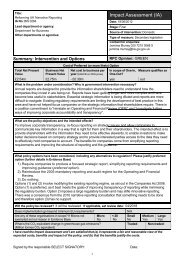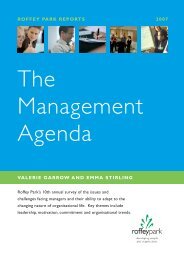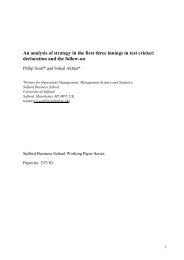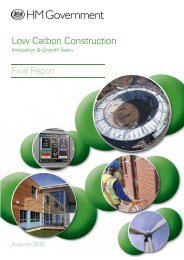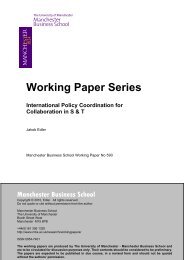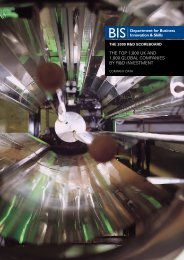Research Paper - Management and Business Studies Portal
Research Paper - Management and Business Studies Portal
Research Paper - Management and Business Studies Portal
You also want an ePaper? Increase the reach of your titles
YUMPU automatically turns print PDFs into web optimized ePapers that Google loves.
3.1 Basic Statutory SchemesIn the United States, the NLRA (<strong>and</strong> related judicial <strong>and</strong> administrative rulings) setforth the basic procedures for statutory recognition, i.e., where the employer has notvoluntarily recognized the union as bargaining representative. Initially, workers in an“appropriate unit” may petition an independent government agency - the NLRB - torequest an election. The NLRB establishes that the workers are in an appropriate unit(a “bargaining unit”) where workers share a “community of interests.” If the union canshow that 30 per cent of the unit supports union representation, the NLRB can orderan election, a secret ballot to be held on the employer’s premises. If a majoritypercent of the workers voting in the election agree to the specific trade union as arepresentative, then the NLRB certifies the election result <strong>and</strong> the employer mustrecognize the union. Once the union is certified, the employer has a “duty to bargain”with that union as the workers’ elected representative.In the United Kingdom, the general statutory structure in the Employment RelationsAct 1999 mirrors that of the United States. To obtain statutory recognition, a tradeunion applies to an independent government agency - the CAC. iv Similar to its U.S.counterpart, the CAC may approve or impose an appropriate bargaining unit <strong>and</strong>,upon a showing of worker support for trade union representation, may order anelection. If a majority of workers support trade union representation, the CAC will thendeclare that the trade union must be recognized by the employer. The simplifiedstages of the basic statutory scheme - which can be described generally as the NorthAmerican recognition model - are set forth in Table 2.Table 2: American Model for Statutory RecognitionStage 1 Stage 2 Stage 3 Stage 4Union applies forstatutoryrecognition withgovernmentagency.Appropriatebargaining unit forrepresentation isdetermined.Governmentagency ordersm<strong>and</strong>atoryrecognition if aconsensus ofworkers wantsrepresentation.Employer <strong>and</strong> unionrepresentativenegotiate asubstantiveagreement.3.2 Variations in Specific United Kingdom <strong>and</strong> United States RecognitionProceduresIn the details of the recognition process, the United Kingdom <strong>and</strong> United States’procedures differ significantly. The variations reflect different political compromises aswell as the varied cultural traditions of the two countries. Table 3 lists some significantprocedural differences in the two processes. vAnnex I further summarizes major statutory variations between the United Kingdom<strong>and</strong> the United States.5




